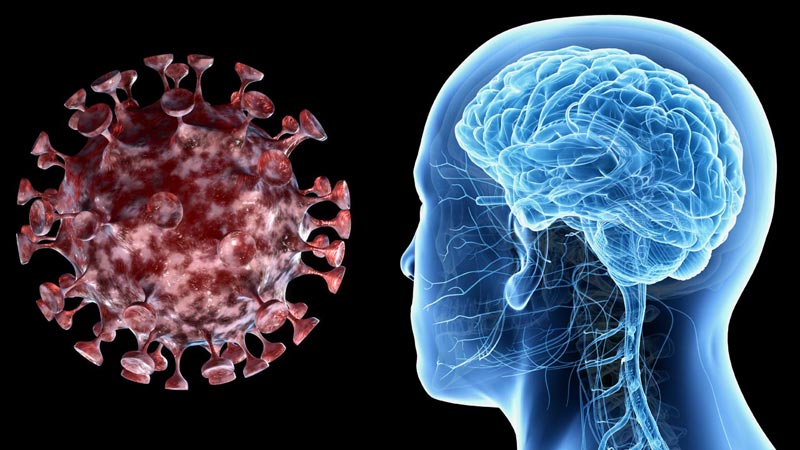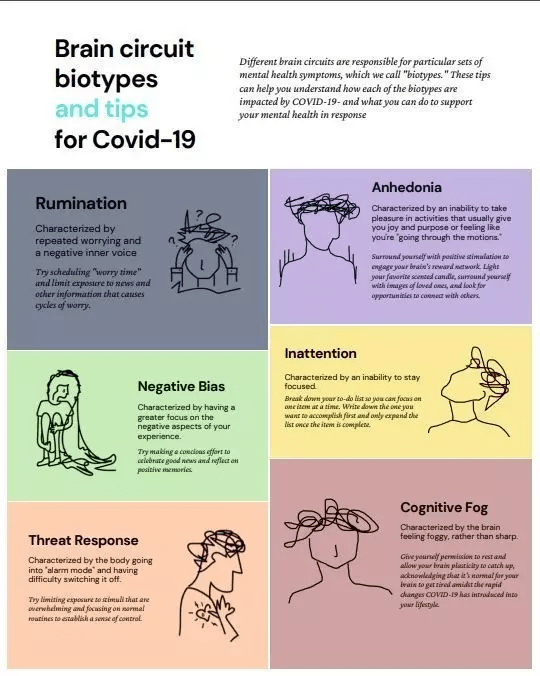How COVID-related stress can disrupt your brain circuits and nine tips to prevent it
 COVID-19 has touched each of us somehow. Many now recognize that caring for our mental health is as essential as addressing the virus if we are to emerge stronger, more connected and more resilient.
COVID-19 has touched each of us somehow. Many now recognize that caring for our mental health is as essential as addressing the virus if we are to emerge stronger, more connected and more resilient.
The Ancient Greeks said “know thyself” to live soundly, but it is only now that we have the technology to start understanding how our individual experiences arise from the complexity of our brains. Gaining understanding of our brain responses offers a window into how mental health symptoms arise, and allows us to mitigate the negative effects of the pandemic on mental health.
At the Stanford Center for Precision Mental Health and Wellness (PMHW), we are looking at cutting-edge techniques to understand how brain circuits make us who we are – and what happens when they go awry.
Brain circuits are like sections of an orchestra; they are composed of many individual brain cells and perform diverse functions on their own, yet must operate in concert with each other to create a harmonious mind. Myriad factors influence the way these circuits operate, for better or worse. Among the most damaging influences on these circuits is chronic stress, wherein parts of your brain that help you with short-term problems (a hungry tiger) are applied to problems with longer timeframes (a global pandemic).
Chronic stress on your circuits can be the first step toward clinical depression or an anxiety disorder. We have quantified the ways that different brain circuits can get disrupted or stuck (which we call “biotypes”). If you recognize yourself in a biotype, it doesn’t necessarily indicate a diagnosis of clinical depression. But it can be a step toward learning how your brain functions.
Here are six biotypes based on work from the PMHW, with tips to deal with their impacts. These are informed by our understanding of the brain circuits and not the result of systematic studies in their own right.
Six biotypes and tips to deal with their impact
1. Negative Bias
A tendency to dwell on the negative aspects of your experience associated with the over-activation of the brain’s negative affect circuit that, when functioning optimally, helps us detect risk and appraise negative emotion but does not generate negative biases.
Tips:
- Make a conscious effort to seek out good news. After reading grim statistics, take a moment to recall a positive memory.
2. Threat Response
Automatic reactions that are activated when the brain’s negative affect circuit is put into “alarm mode” by threatening situations (real or perceived, immediate or remembered, physical and social) and which are hard to switch off when the sense of threat persists.
Tips:
- Avoid stimuli that are activating, such as alarming media sources. Over time, gradually increase exposure to necessary stimuli.
- Focus on normal routines to create stability.
3. Emotional Numbness/ Anhedonia
Unable to take pleasure in activities that usually bring you joy, associated with reduced activation in the brain’s positive affect circuits that previously responded to rewarding events, activities and memories.
Tips:
- Use sources of stimulation to engage the brain’s reward network — finding pleasant smells for the home, playing favourite music, and surrounding oneself with positive images.
4. Inattention
Difficulty concentrating and staying focused associated with disruptions in the connectivity of the brain’s attention circuit.
Tips:
- Break down your tasks and decide which you want to achieve in that hour or day. Write it down. Expand the list only once that task is done.
5. Rumination
General tendency to worry and “ruminate” on negative thoughts from your inner voice. PMHW studies and others suggest this arises when the brain’s default mode circuit is in overdrive, making calmer self-reflection difficult.
Tips:
- If you find yourself overwhelmed by news, limit yourself to a single, trusted news digest.
- Schedule “worry time”, creating a sense of control and limiting impact on activities important for mental health, including sleep, meaningful discussion and exercise.
6. Cognitive Fog
Brain may feel foggy, reflecting reduced activation in the cognitive control circuit (the brain’s “executive”).
Tips:
- Take periods of rest for brain plasticity to catch up.
- Be mindful that with the rapid changes we are experiencing, our brains are going through accelerated learning. Our brains get tired just as our bodies would if we ran a marathon without training.


 Written by:
Written by:
